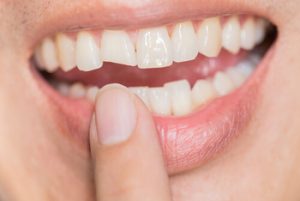When considering cosmetic dental treatments to enhance your smile, the question of “How many veneers do I need?” often arises. Veneers are popular in cosmetic dentistry for creating a beautiful, natural-looking smile. They can transform crooked, stained, or damaged teeth into a flawless arrangement. In this blog, we’ll explore everything you need to know about choosing the right number of veneers to meet your cosmetic goals, whether a subtle improvement or a complete smile makeover.
Understanding Dental Veneers

They are custom-made to match your teeth’ natural colour and contour and are permanently bonded to provide a durable, long-lasting finish. Porcelain veneers are highly praised for their ability to resist stains and mimic the light-reflecting properties of natural teeth.
Evaluating Your Smile
The number of veneers you need largely depends on your smile’s specific characteristics and expectations. Here are key factors to consider:
The Extent of Visible Teeth
When you smile, talk, or laugh, the number of teeth that are visible can vary widely from person to person. Some may show six to eight veneers worth of teeth, while others might display more. A cosmetic dentist will evaluate which of your teeth are visible and need to be veneered to create a harmonious, balanced appearance.
Desired Outcomes
If your goal is a complete smile makeover, you might need more veneers than someone looking to correct a few misaligned teeth. For instance, veneering just those may suffice if only your upper teeth are a concern. However, achieving symmetry and a natural smile also requires extending the treatment to lower teeth.
Current Dental Health
The condition of your natural teeth is crucial in determining how many veneers are necessary. If you have several teeth that are discoloured, chipped, or crooked, you might need more veneers. Conversely, fewer veneers might be required if only a couple of teeth have aesthetic flaws.
How Many Veneers Typically?
The number of veneers one needs can range widely:
Single Tooth Corrections: If you have just one tooth that disrupts the aesthetics of your smile, a single porcelain veneer may be sufficient.
Multiple Teeth: Commonly, people opt for six to eight veneers on their upper teeth to create a uniform, aesthetically pleasing smile. This number covers most of the visible teeth when smiling.
Complete Smile Makeover: Some choose to veneer all visible teeth, which can sometimes mean up to ten or twelve veneers encompassing both upper and lower teeth.
Types of Veneers
It’s important to understand the different types available when considering veneers, as each offers unique benefits and considerations. Here’s a quick overview of the main types of veneers used in cosmetic dentistry
Porcelain is the most popular material due to its durability and natural appearance. Typically, the number of porcelain veneers needed will depend on the factors mentioned above.
Resin composite veneers can be a cost-effective alternative to porcelain. They generally require less tooth enamel removal but might offer a different longevity or stain resistance than porcelain.
The Process of Getting Veneers
Getting veneers is a transformative procedure that can significantly enhance your beautiful smile, but it requires careful planning and several key steps. Below, we delve deeper into what you can expect during the process, including how it can address various dental issues like crooked teeth, dental trauma, and more.
The path to receiving veneers begins with a crucial initial consultation. In this meeting, your cosmetic dentist evaluates the health of your natural teeth, discusses what you hope to achieve aesthetically, and determines the number of teeth that will be covered by the veneers. This is the opportunity to raise any concerns about crooked teeth or previous dental trauma. The dentist also checks the condition of your underlying tooth structure to ensure it is suitable for supporting veneers. This assessment is essential for customising the veneer application, potentially extending it to enhance other teeth for a full smile transformation.
From this consultation, your dentist will craft a comprehensive treatment plan. This plan specifies the number of veneers required to ensure a cohesive look that integrates smoothly with your other teeth that are not being veneered.
If your dental assessment reveals alignment issues or trauma, the treatment plan may incorporate preparatory procedures such as straightening misaligned teeth or treating any underlying damage before applying the veneers.
The preparation for veneers involves lightly etching away a thin layer of enamel from each tooth’s front surface. This crucial step guarantees that the veneers will fit perfectly and appear natural, without looking overly thick.
In cases where teeth have experienced decay or trauma, more thorough preparation may be needed to reinforce the underlying tooth structure. Your dentist aims to conserve as much of the natural tooth as possible, providing a solid foundation for your new veneers.
Following the preparation, your dentist will make precise moulds of your teeth, which are sent to a dental laboratory where your custom veneers are fabricated from premium porcelain.
This fabrication is crucial for ensuring that the veneers not only fit flawlessly but also match the shade and transparency of your natural teeth, contributing to a stunning and completely natural smile.
When your porcelain veneers are ready, you’ll revisit your dentist for the fitting session. Here, each veneer is carefully bonded to its respective tooth. Before finalising the bonding, your dentist temporarily places the veneers to assess their fit and look, making any necessary tweaks. This step is critical to ensure that the veneers fulfil your aesthetic expectations and integrate seamlessly across your entire smile.
A follow-up visit is generally arranged after your veneers are installed. This appointment allows your dentist to verify that the veneers are performing as intended and that your gums are adapting well to the new additions. It also provides a chance to adjust your dental care routine to uphold the health and appearance of both your veneers and surrounding teeth.
Conclusion

Ready to transform your smile with veneers? Contact Infinity Dental Care at (02) 9159 6237 to schedule your consultation today. Let us help you achieve the beautiful, natural smile you’ve always desired.
References
https://my.clevelandclinic.org/health/treatments/23522-dental-veneers#:~:text=Dental%20veneers%20are%20custom%2Dmade,most%20common%20cosmetic%20dentistry%20treatments.
https://www.healthline.com/health/dental-veneers

